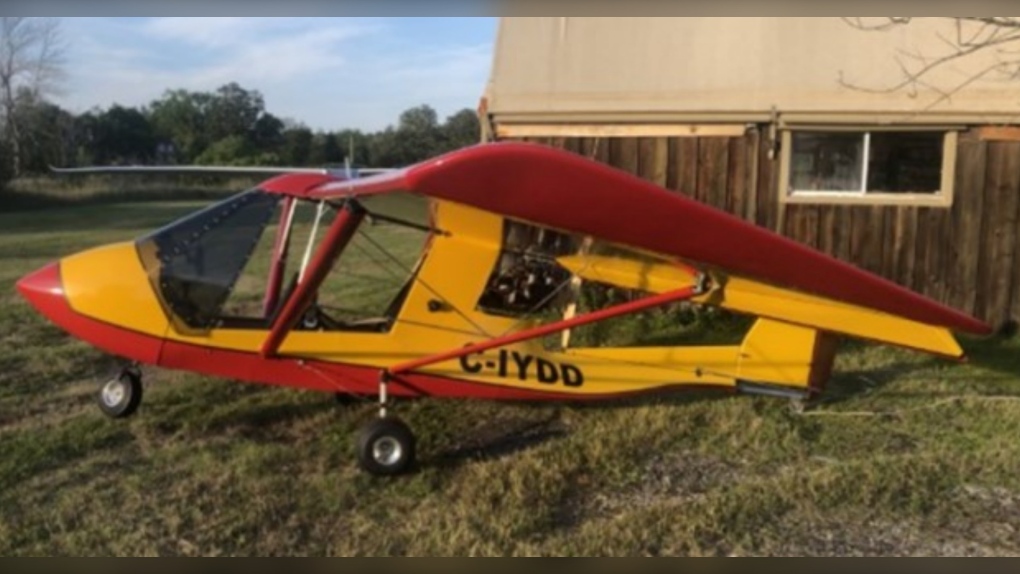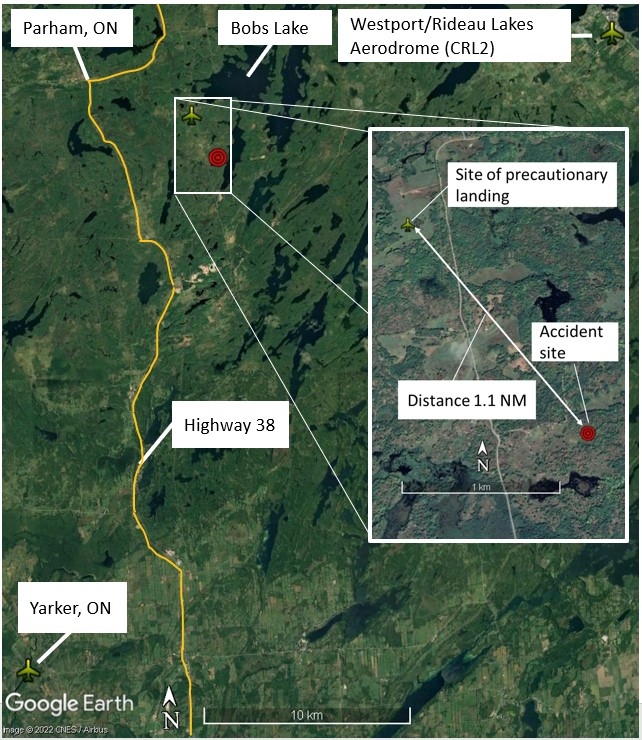Lack of black box prevents full investigation into fatal plane crash north of Kingston
 The Quad City Challenger II involved in the crash. A pilot was killed when he crashed in September 2022. (Image source: Niall Leslie, via Transportation Safety Board of Canada)
The Quad City Challenger II involved in the crash. A pilot was killed when he crashed in September 2022. (Image source: Niall Leslie, via Transportation Safety Board of Canada)
The Transportation Safety Board of Canada says it was unable to complete a full investigation into a fatal plane crash north of Kingston last September because the aircraft was not equipped with a flight data recorder, but there was no evidence of any mechanical failures.
OPP were called about a plane crashing in the woods near the southern tip of Bobs Lake just after 3 p.m. Sept. 24, 2022. The pilot was found dead at the scene.
According to the TSB, the pilot took off from a private runway near Yarker, Ont. earlier in the day in an ultralight Challenger II plane, bound for Westport. During the flight, a door opened and the pilot made an emergency landing in a field. After completing repairs to the door with help from the owner of the aircraft, the pilot resumed his flight. The plane was seen flying at a low altitude and the engine was making a sputtering sound. Witnesses then saw the plane crash.
The TSB says the plane had crashed about 2 km away from the site of the emergency landing.
 A Google Earth image showing the emergency landing and crash sites in a fatal ultralight plane crash Sept. 24, 2022. (Transportation Safety Board of Canada)
A Google Earth image showing the emergency landing and crash sites in a fatal ultralight plane crash Sept. 24, 2022. (Transportation Safety Board of Canada)
The pilot held a pilot permit and had around 530 flight hours. The TSB investigation found no indication that the pilot's performance was degraded by fatigue or other physiological issues.
The report from the TSB states that the plane was equipped with an engine identified as a ROTAX 503 UL, which has not received any safety or durability testing and is "for use in experimental, uncertificated aircraft and vehicles only in which an engine failure will not compromise safety," according to the manufacturer. The manufacturer also states aircraft equipped with it should not be flown under conditions where a successful no-power landing cannot be made in case of engine stoppage.
The TSB says the pilot was flying at a low altitude over a forested area with few suitable landing sites at the time of the crash. The engine itself is proper for the type of aircraft that was being flown, the TSB confirmed.
The investigation found no indication of any malfunction or mechanical failure with the engine or aircraft systems, but because there was no black box on board—nor was one required by regulations for this type of aircraft—the TSB said it could not determine the full sequence of events that led to the fatal crash.
CTVNews.ca Top Stories

W5 Investigates A 'ticking time bomb': Inside Syria's toughest prison holding accused high-ranking ISIS members
In the last of a three-part investigation, W5's Avery Haines was given rare access to a Syrian prison, where thousands of accused high-ranking ISIS members are being held.
'Mayday!': New details emerge after Boeing plane makes emergency landing at Mirabel airport
New details suggest that there were communication issues between the pilots of a charter flight and the control tower at Montreal's Mirabel airport when a Boeing 737 made an emergency landing on Wednesday.
Federal government posts $13B deficit in first half of the fiscal year
The Finance Department says the federal deficit was $13 billion between April and September.
Weather warnings for snow, wind issued in several parts of Canada
Winter is less than a month away, but parts of Canada are already projected to see winter-like weather.
Canadian news publishers suing ChatGPT developer OpenAI
A coalition of Canadian news publishers is suing OpenAI for using news content to train its ChatGPT generative artificial intelligence system.
Cucumbers sold in Ontario, other provinces recalled over possible salmonella contamination
A U.S. company is recalling cucumbers sold in Ontario and other Canadian provinces due to possible salmonella contamination.
Nick Cannon says he's seeking help for narcissistic personality disorder
Nick Cannon has spoken out about his recent diagnosis of narcissistic personality disorder, saying 'I need help.'
BREAKING Supreme Court affirms constitutionality of B.C. law on opioid health costs recovery
Canada's top court has affirmed the constitutionality of a law that would allow British Columbia to pursue a class-action lawsuit against opioid providers on behalf of other provinces, the territories and the federal government.
Real GDP per capita declines for 6th consecutive quarter, household savings rise
Statistics Canada says the economy grew at an annualized pace of one per cent during the third quarter, in line with economists' expectations.

































